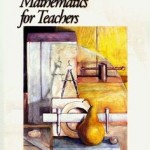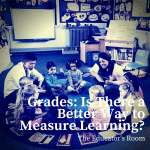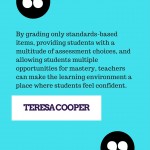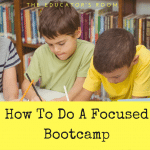It seems recently that there has been more of an explicit push in education to connect the content to the students themselves. Why should they care about what’s going on in the classroom? How does it impact them personally in their homes, communities, and nation? How can they use it beyond the test?
Where a handful of us seem to struggle is in finding ways to make these connections. I challenge you to consider the power of current events.
Current events are a wealth of examples of class concepts in the real world. Perhaps that story on a discriminatory act helps highlight the relevancy of the racism demonstrated in To Kill A Mockingbird. Or that collapsed building is due to miscalculated angles. Or the recent unemployment numbers put into question the business cycle in economics. Or an international conflict allows your class to explore different approaches to foreign policy, and the consequences of each.
But the benefits exceed beyond providing real-life and modern-day examples of content. Current events also allow students the opportunity to explore bias and develop a critical lens. Allow students to read the actual news articles. Do they think the article was written to advance a particular agenda or point of view? Who is interviewed, and what voices or perspectives are left out? Who are quoted as the experts, and what are their credentials? Is the language loaded? What outlet published the piece? These questions can also be used to analyze broadcast news reports, public opinion polls, and political cartoons. Current events, then, allow you to hit on key Common Core skills and develop strong reading comprehension.
However, the incorporation of news into the classroom requires a great deal of awareness and flexibility on the teacher’s part. Not only must you keep apprised of current events yourself, but you must be willing to move content around when a particularly relevant story emerges. For example, last August/September’s Syrian conflict came about at a time when I was planning on teaching the Bill of Rights. After a few students asked me about the conflict, it became apparent that this was an excellent opportunity to teach about foreign policy in a way that is relevant and urgent for the students. The Bill of Rights, then, got pushed off for a few days as we explored the conflict and the administration’s response. This can’t always happen, as some content really needs to get covered first before really tackling the relevant stuff with any depth – but you can always return to a story within a few months.
How, then, can those current events actually be incorporated into the content? My school’s entire social science department requires students to complete weekly current events. In my classroom, this means every Friday students bring in a hard copy of an article and a completed worksheet that requires them to summarize the story, express an opinion, and analyze any bias in how the story was written. During the last half-hour of class, students share CEs at their table, select the “best” one, and a randomly-selected student at each table shares that story with the class. We then respond to the story and connect it to what we’ve learned that week.
Of course, there are other ways to do it without assigning the students the work. Three resources in particular tend to produce solid resources:
- Brown University’s CHOICES program has free curriculum called “Teaching with the News,” which often gives students different options to respond to a particular instance. This is a great opportunity for students to develop their own opinion and be able to articulate that in a class discussion/debate.
- The New York Times develops lesson plans based on major news stories. Often these plans involve reading selections from The New York Times itself. There are also often worksheets and/or links to news clips.
- PBS’s Learning Media likewise has a vast database of lesson plans that explicitly incorporate news stories. These often use clips from PBS shows, such as POV and Newshour.
Regardless of your approach, current events are a ripe place to show where your content is relevant in the world today. They help students develop critical assessments of the world around them, and help them answer the paramount “so what?” question of their education. Use the news to help imbue key Common-Core-style skills in your students, and empower them to take charge of their learning.





